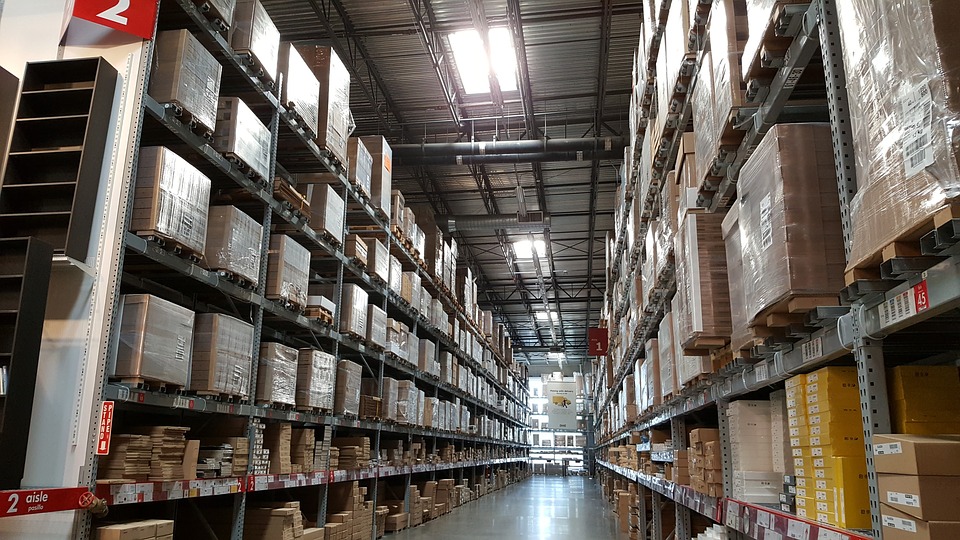It should come as no surprise that supply chains are growing in size and scale. Customer expectations have forced this growth, and now suppliers, retailers, and producers must keep their supply chains running as smoothly as possible to stay competitive.
The key to effective supply chains is powerful supply chain management software (SCMS). SCMS allows supply chain managers to access every point of the supply chain, from order fulfillment to compliance, through various tools. At Hollingsworth, we use SAP enterprise resource planning (ERP) to perform complex supply chain functions. SAP also enables suppliers to use some of the most important tools for moderns supply chains.
As supply chains continue to become more complex, supply chain managers will need to take advantage of every tool at their disposal. These are among the most important supply chain management tools.
 Supply chains can become increasingly immense and complicated, particularly for corporations that distribute on a global scale.
Supply chains can become increasingly immense and complicated, particularly for corporations that distribute on a global scale.
Shipping status tools are a simple way to keep track of all your shipments. Thanks to powerful SCMS, you’ll be provided with real-time shipment updates, keeping you up to date on their progress.
You can also schedule alerts to let you know when the shipment is complete, or if the estimated time of delivery has changed so that you can make necessary adjustments.
From billing to order fulfillment, the order process has plenty of areas to keep track of. To simplify things, many types of SCMS provide a variety of order processing tools to help you stay on top of orders.
Some software will also go beyond simple order processing. For example, our SAP ERP system allows for complete sales channel integrations, meaning that you can keep track of all your inventory and orders in one easy location.
[Related: An Essential Guide to Order Fulfillment]
You never want to run out of any materials you need, but leaving them sitting in a warehouse is inefficient and expensive. Lean inventory takes the just-in-time (JIT) production method and applies it to inventory management.
JIT prevents the production of excess goods by producing them only when needed. Similarly, lean inventory reduces the number of goods you have lying in a warehouse. Lean inventory is particularly useful for small parts that don’t need to be supplied year-round. Some lean inventory tools, such as our JIT system, use sharp forecasting tools to provide the most cost-effective solution.
Amazon revolutionized the way supply chains view warehouses, including how individual companies manage their warehousing.
Because of the rising costs of warehousing and Amazon’s consistent pressure, many companies are beginning to find that outsourcing is the most cost-efficient solution. Outsourced warehousing gives you different options for your supply chain, such as the option of private or public warehousing, both of which are scalable and emphasize efficiency to keep your supply chain running smoothly.
Businesses that have operated SCMS don’t need to be told that supplier management can be complicated. Using our SAP programming, we’ve made supplier management both easier and more effective.
With our supplier management tool, we’re able to track which suppliers are making significant contributions to your current supply chain. From here, we’re able to use the data to renegotiate contracts or change suppliers, cutting your costs without disrupting supply.
To run an effective lean inventory operation, you need to meet the ever-changing demand for goods from clients and consumers. The most efficient way to do this is with a demand forecasting tool.
Demand forecasting takes into account past trends to generate an accurate estimate of future needs. Forecasts are generated quickly, letting you adjust your supply strategy before it becomes an issue.
[Related: Best Practices for Optimizing Supply Chain Management]
Demand forecasting tools prevent both a shortage of stock when demand is high, and overstocking when demand wanes. Thanks to the massive amounts of data that SCMS collects, demand forecasting is typically spot-on with its predictions.
 After your supply chain software collects information, you need analytics and reporting tools to tell you the most effective way to move forward.
After your supply chain software collects information, you need analytics and reporting tools to tell you the most effective way to move forward.
Analytics is one of the most important technologies in an effective supply chain. Data collected is comprehensive and can give you information on just about every sector of a company, beyond inventory and shipment. In conjunction with demand forecasting, analytics can also find any errors or gaps in your supply chain, ensuring that you’re not just meeting demand, but that you’re doing so in the most efficient way possible.
Reports are the end result of analytics. Analytics can lead to various types of reports, but they all have the same purpose — to depict what the analyzed data is saying. Each report will reveal how your supply chain is stacking up to your preestablished key performance indicators. From here, you can adjust your supply chain management strategy to meet your goals.
Supply chain managers are generally focused on the supply chain, so security can go overlooked. But ignoring safety can expose your business to threats. Data theft is a serious problem among businesses, potentially driving partners and customers away and affecting your reputation. Anyone who purchased goods from you is also at risk of having passwords, credit cards, and personal information stolen.
Thankfully, you can significantly decrease the risk of data theft through SCMS security features.
Security should not rely on your SCMS alone, though. Smart businesses will limit access to their SCMS so employees only have access to the information they need to do their jobs. This mitigates the risk of someone accidentally compromising your information.
Knowing where products are made and how they’re produced is a growing concern among consumers and, as a result, suppliers. Suppliers are feeling more and more pressure to ensure that their standards comply with industry, government, and consumer expectations.
Compliance tools in SCMS analyze suppliers to prevent you from ordering noncompliant products. Also, because management software is designed with ease of use in mind, you’ll be able to easily access records to prove compliance in the event of an audit.
Dozens of tools are available in SCMS, all of which can individually impact your supply chain. But the best way to utilize your SCMS tools is together, in conjunction with one another. Many of these tools are designed to work with other tools, increasing the effectiveness of your overall supply chain.
Keep in mind that not all SCMS is created equal, nor are the tools they come with. To get the most out of your supply chain management, you’ll need to find the ideal software or logistics service that scales with your business.











